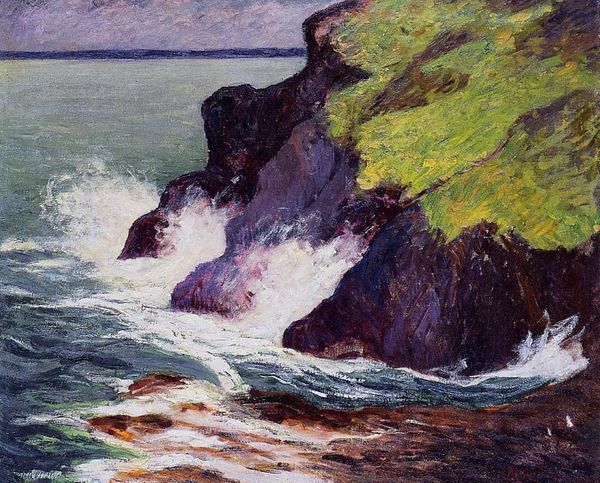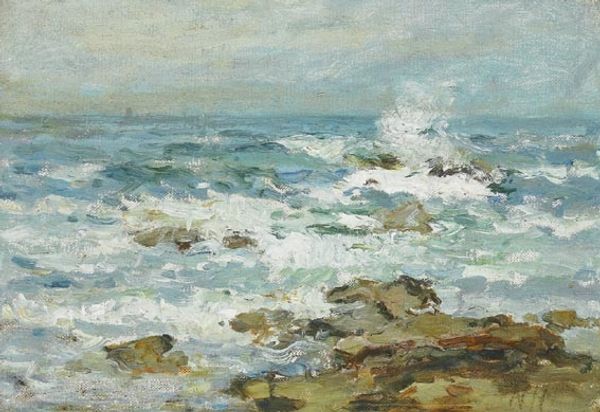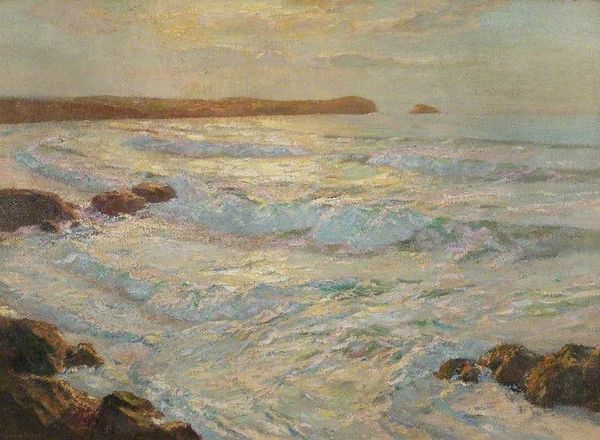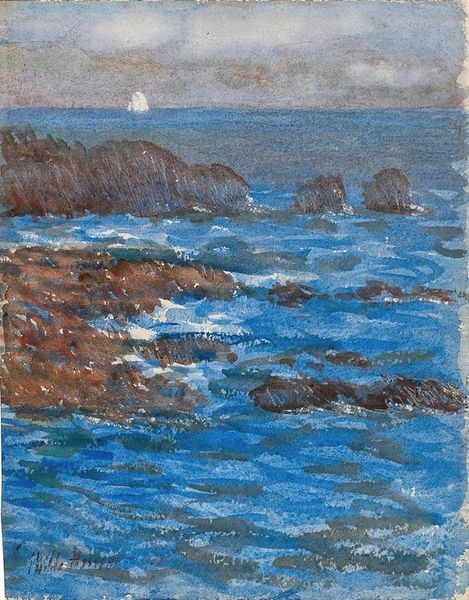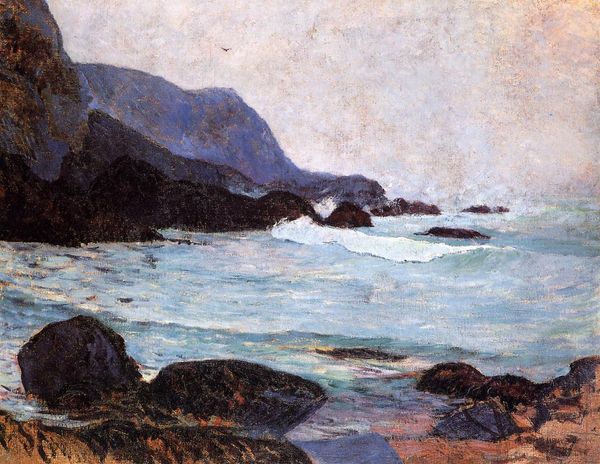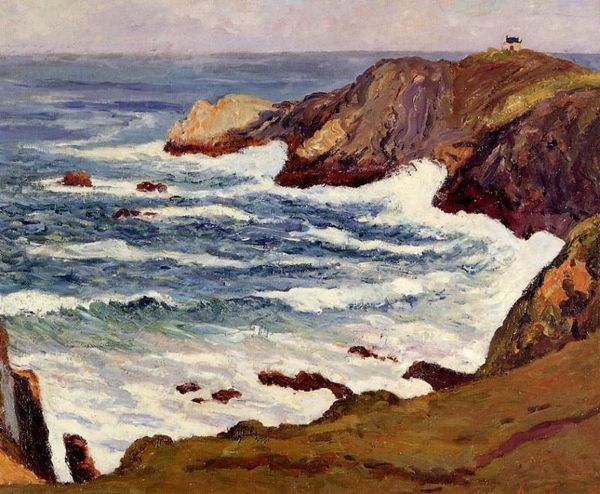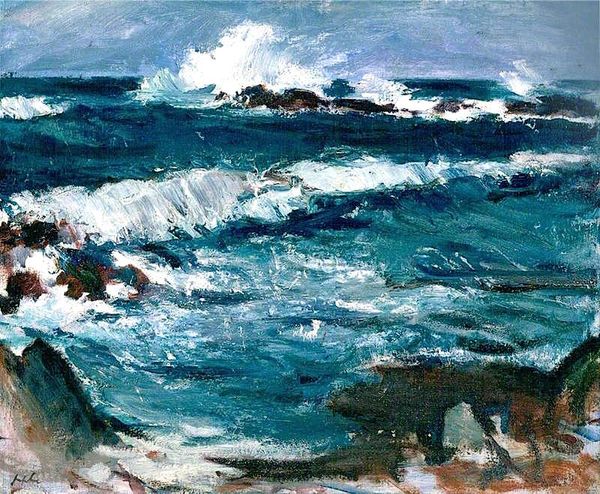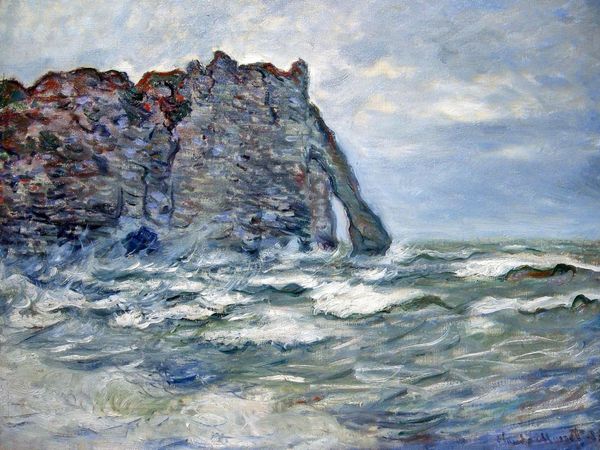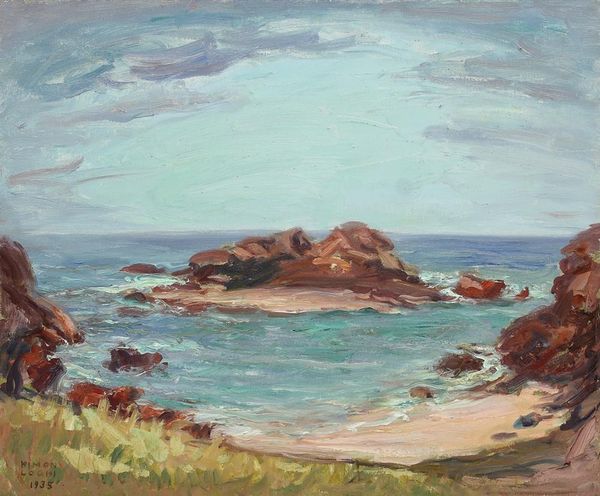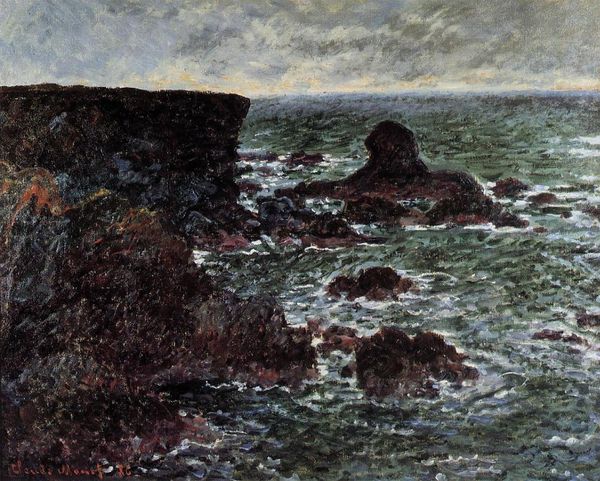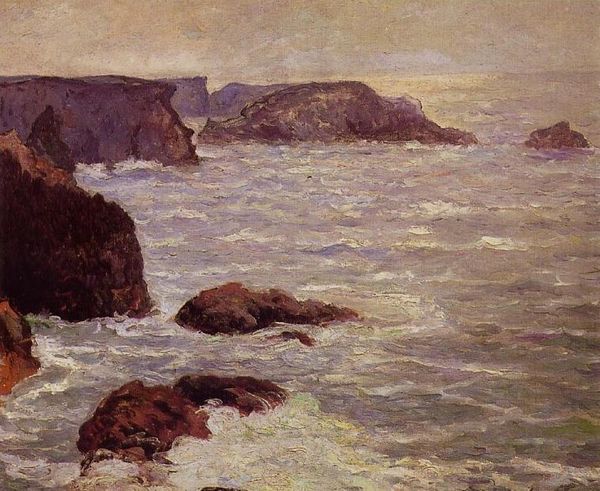
Copyright: Public domain US
Editor: This is "Rochers \u00c1 Belle Ile," painted by Henri Matisse in 1896. It looks like an oil painting depicting a rugged coastline. I'm struck by its restless energy – the way the brushstrokes capture the movement of the waves. What do you see in this piece? Curator: I see a young artist grappling with the traditions of Impressionism, but already hinting at the revolutionary use of color and form that would define his later work. Consider the socio-political context: France in the late 19th century was a nation grappling with rapid industrialization and social upheaval. How might that unease manifest in art? Notice the way the landscape isn't idyllic, but rather turbulent, even threatening. Does that suggest anything to you about the artist's potential mindset, his own feelings of conflict? Editor: That’s interesting. I was focusing on the brushstrokes, but thinking about the social context makes me see the painting differently. I guess it's easy to overlook the historical weight behind what seems like a simple landscape. Curator: Exactly. Think about Belle Ile itself – a coastal region, historically a site of both refuge and invasion. The landscape itself carries a history of power, conflict, and resilience. How might Matisse, consciously or unconsciously, be engaging with that history? Even the seemingly objective act of painting a landscape can be seen as a form of cultural commentary. Editor: So, it’s more than just a pretty picture of the sea? Curator: Absolutely. Art rarely exists in a vacuum. It's a product of its time, shaped by social forces, personal experiences, and a dialogue with art history. Editor: I’ll definitely look at Impressionism differently now. Thanks for broadening my perspective. Curator: And thank you for bringing your fresh perspective to this early work! Considering how the landscapes themselves have borne witness to history opens a valuable interpretive lens.
Comments
No comments
Be the first to comment and join the conversation on the ultimate creative platform.
